Magda M. Olchawska's Blog, page 3
December 10, 2021
Getting Ready for Sustainable Christmas Holidays
 Photo by Chinda Sam on Unsplash
Photo by Chinda Sam on UnsplashChristmas can be a wonderful time if it’s stress-free and won’t leave a massive dent in our finances. For me, Christmas Holidays is when I slow down, watch lots of Christmas movies eating popcorn, cook very little and try to survive on leftovers for as long as I can.
However, apart from the magical side, Christmas time is also one of the most unsustainable times of the year. To already over-polluted planet we bring more of, just to name a few:
Gifts,Wrapping paper,Christmas cards,Packaging used to ship gifts,The unwanted gifts that end up in the landfill (Please ask your family and friends what they would like before you buy anything).Uneaten food. It’s always better to buy less than throw out uneaten food. You can also freeze the food you think you might not be able to eat before it goes bad and unfreeze it when you need it.Christmas trees, lights, and decorations.Since 2021 was all about introducing sustainable choices in my and my family’s lives, we decided that Christmas should be sustainable too.
I started our Sustainable Christmas Season by recycling our Christmas tree, which I saved from last year. The tree wasn’t in pristine condition, but we deemed it good enough. I had to cut off some of the branches because those were dead, but after decorating the tree with Christmas lights and ornaments, it looks genuinely charming.
Not throwing out a perfectly good tree saved us not only money but also time looking for a new tree, the plastic container that trees come in, the carbon footprint from transporting the tree and, of course, we cut down on demand.
When it comes to the wrapping paper, I’m using a recyclable one, which I got on sale last year. Since we also celebrate Santa Claus day, which is on the 6th of December, I usually recycle that paper too by wrapping up other Christmas gifts. Well, at least the bits that the kids didn’t manage to destroy (think Monica Geller, but without ironing the paper, I’m not mental 😉).
This year’s gifts are minimalistic, plastic-free, and sustainable long-term swaps. For instance, my son asked for a new phone case because his sister broke his old one. Well, I looked for the case on the Pela website, but because his phone isn’t that popular, no case could be found. So instead of jumping over to Amazon, I jumped over to Etsy and started looking for phone stands he could use as a long-term solution, even after changing his phone. I found a nice alternative, 3D printed, made in the UK (good news for shipping reasons), independently made from recycled plastic. It was perfect, and I think he likes it too (he got in from Santa on the 6th of December).
One of the gifts I got my daughter comes from a charity shop, and when I saw that bright green jumper, I knew it belonged to her.
The Charity shops I have visited recently had plenty of lovely stock: shoes, clothing, jewellery, all excellent for Christmas gifts. One of the books my daughter will get is also second-hand; she loves books and paying £8 for a book each time adds up over time. She still has lots of books from when her brother was a baby, but, now and then, we buy her a lovely new story.
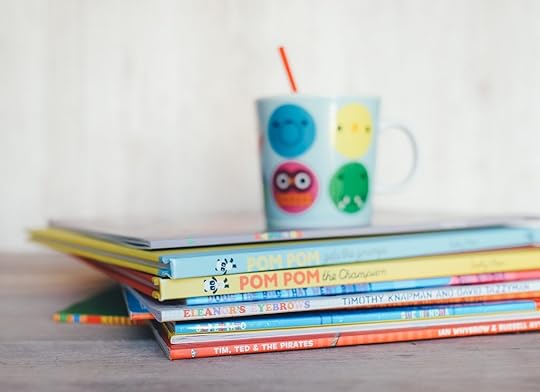 Photo by Annie Spratt on Unsplash
Photo by Annie Spratt on UnsplashOn December 6th, Santa also brought her a wooden tea set. I was going to buy the tea set online, but because the shop didn’t have what I was looking for, she got the tea set instead. The set is wooden, and I didn’t use shipping to get it. However, I forgot to check where it was produced, and it was made in China, which isn’t ideal (Note to self: always, always remember to check the country the product was made in).
For my friends, I got gifts in Poland over the summer, which are artisan handmade things. However, if I didn’t buy anything interesting for them in Poland, I would have definitely checked out the charity shops before purchasing anything new.
When it comes to food this Christmas, we are still lingering on to the hope that we will travel to Spain and have a very simple Christmas. If we cannot travel, because, you know, “the bugger” isn’t going away any time soon, as every year we won’t go over the board shopping. I’ll bake cakes, make something vegan, and we might have some traditional Polish Christmassy foods, but those are going to be in small quantities.
Surprisingly, or maybe not, it takes more time to plan for minimalistic Christmas cooking, but since we have been practising this approach for a few years now, it’s no longer a big struggle. Planning is essential before anything becomes a habit.
When it comes to gifts, it takes more time to find gifts that are sustainable, useful, and the people you give them to would love them. That’s why I usually start planning in the summer (I’m obsessed with planning and lists 😉).
Re-gifting is also an excellent solution to waste, clutter and makes a lot of financial sense.
If you decide to make gifts yourself, make sure the people you are making the gifts for will appreciate your effort; not everyone values handmade gifts. I love handmade, one of a kind things, and cakes or cookies as gifts. But I have also experienced disappointment in people’s eyes when they saw my handmade scarves or hats. It takes a lot of time to make those, and time is the only commodity we cannot get more of. Not buying gifts at all is also a perfectly valid option.
Sustainable eco-minimalistic Christmas is possible, doable and, in fact, lots of fun if you stretch yourself far enough to see what you can thrift, re-purpose or make.
The post Getting Ready for Sustainable Christmas Holidays appeared first on Ecotopia Universe.
November 12, 2021
What Does Ecofeminism Mean?
According to Wikipedia Ecofeminism is “a branch of feminism that sees environmentalism, and the relationship between women and the earth, as fundamental to its analysis and practice. Ecofeminist thinkers draw on the concept of gender to analyse the relationships between humans and the natural world.”
Ecofeminism has always been part of our human existence, emphasising a strong connection between women and Mother Earth. If we look at the importance of women in tribal cultures, their knowledge of herbs, used in cooking, healing and art, can clearly set a pattern of Gaia’s giving and female energy understanding and acceptance her gifts.

Women have always had a deep connection to nature, which have often been linked with the expansion of powerful gut feelings women get, giving them almost psychics-like powers. However, this powerful relationship hasn’t always been appreciated by the exploitive nature the patriarchal culture has been enforcing onto nature, the environment, women, and anyone not fitting the established patriarchal image.
The fear of empowering women (women are powerful and, if collectively we support one another, we could be unstoppable) was one of the triggers of the Catholic Church’s (patriarchal society at its “best”) prosecution of “witches”. The witch-hunting chapter of our shared history was enforced to keep women in fear, uneducated, disconnected from the power of nature and dependent on men (husbands or fathers) without rights, opportunities, and possibilities to decide about their lives and futures.
History loves repeating itself, and if it is forgotten, it’s even easier for the past to catch up with the present. From the current political trend swiping through many developed nations, one can easily see that those pushing nationalistic agendas try to turn back time. For many individuals, even in the younger generations, that sounds like a very promising perspective. For women, turning back time would ultimately mean going back to a wretched place, a place without rights and opportunities, filled with crushed dreams and possibilities. Only because someone was born a man shouldn’t mean they know better, or their perception of reality should be a status quo and accepted as the rightful truth.

As women, we must protect our rights and not give our powers away for “false” security promises. On the surface “secure” life could be easier. But in reality, would require too many sacrifices, including scaling down on our powers, rights, opportunities and possibilities.
Throughout history, women have been portrayed as the weaker “elements” that can be pushed aside, intimidated, and have their rights, jobs, and lives taken away if we speak up. To be fair, it still happens on daily basis, especially online, but at least now we can fight back all these awful trends: discrimination, misogyny, sexism, ageism, etc.
With the rise of right-wing politics and climate-change-denying rhetoric across the world, now more than ever, we need to fiercely protect our rights and freedoms, which by natural order are strongly connected to Mother Earth.
The disregard of Mother Earth displayed by political and corporate powers (Who runs those organisations? Who is in control?) is reflected in the treatment of women: still, ongoing lack of opportunities, rising childcare costs, lack of support, gender inequality when it comes to pay and education, violence against women, belief that women are inferior, sexualisation of young girls, mainstream media narrative that women only should look good and spend money left and right, instead of building a nest egg etc. As you see, I could go on and on.
We should be cherished for our ability to draw powers from our relationship with Mother Earth, instead of accepting and submitting to the outdated image of women and womanhood.
The patriarchal media image of “an ideal woman” has distorted our image in our own eyes, and people, who feel threatened by female empowerment want to continue pushing that harmful concept.
Preserving the planet in a sustainable way for future generations is what we all should be focusing our energies on; not on how women look, what they eat and whether they are nice, hot or “difficult”.
If we are to save this planet, women can’t be side-tracked and excluded from the decision-making process. It’s time to take our powers back and focus our energy on rebuilding the planet and lives based on a genuine, and loving relationship between humans and Mother Earth allowing women to thrive in the process.
The post What Does Ecofeminism Mean? appeared first on Ecotopia Universe.
October 1, 2021
Let’s Talk About Re-gifting
Since I’m the queen of list-making every year, I make Christmas and birthdays wish lists. I do it purely for practicality because I know pretty well what my wants and needs are at that time. All my life, I’ve loved practical gifts. However, since I immersed myself in the sustainability and financial independence movements, my push towards practicality while giving or receiving gifts has grown even further.
 Photo by Nina Mercado on Unsplash
Photo by Nina Mercado on UnsplashIt doesn’t mean that the kids or I never receive gifts that aren’t practical for us. Of course, we do, and I’m always grateful that someone thought about me and cared enough to give me a gift. However, I always try to find a second home for those presents that we won’t be able to enjoy as much. I know that someone else would be able to make better use of those gifts than us. I’m very comfortable re-gifting and don’t attach shame to that activity.
Since the Holiday season is approaching fast and the craziness of buying gifts is already kicking in, I would like to share some statistics with you and ideas that perhaps you could think of implementing, instead of just buying random gifts for your family and friends. See if that works for you and agrees with your values.
Before you decide to buy anything, think hard about that gift’s practicality. Is the person you are buying the gift for going to use it? How big is it? Can they even fit it in their space? (People often live in small places in large cities, so size does matter for us, city dwellers.)Just ask your family and friends if there is anything they would like to receive. This will help you save money and time.Don’t necessarily buy gifts that you would want for yourself. It’s not for you after all.Don’t buy small home deco gifts. Those are often impractical dust gatherers, and if people have no space, they won’t use them. Also, if their taste is different than yours… it’s not going to work.Unless you are specifically asked, don’t buy big-boxed DVD or CD collections. Don’t buy cheaply made kitchen stuff. The quality of those items is awful, and they often fall apart after the first use. Pens, pencils, and crayons with plastic animal heads on them; they do get beheaded almost instantly. Gifts like that massively add to the landfill pollution. Sweet-looking outfits for kids that can’t be worn anywhere or are impossible to put on. Clothes unless people specifically asked for them.Don’t buy vouchers for activities you aren’t sure people will enjoy or vouchers that need topping up in order to be used. Cheap jewellery. If you want to buy jewellery, go to a charity shop, where you can find really lovely and original pieces for a fantastic price.Good gifts ideas can save you time and money and make your friends and family happy in the process. Think of below:
First of all, ask what people need and want. If they give you a list of things they would like to get, your job is nearly done. You just have to pick something from that list.Vouchers that can be used in different shops. I know it’s impersonal, but that kind of gift offers flexibility and people like flexibility.Handmade stuff, preferably that you made yourself, but you can also get many beautiful handmade things from markets or find on Etsy (make sure you aren’t buying the mass-produced stuff, which also found its way to Etsy). It can be something small and simple or a larger project like a hat or a scarf. Cosmetics and beauty products, as long as they don’t come wrapped up in a tone of plastic. You have to be mindful of that type of seasonal gift. Often the container size is smaller than the standard one, and a lot of plastic wrapping is used to get all those small-sized bottles inside. I believe in practical gifts, so if you know that someone needs something, you should always buy this above anything fancy and expensive that will be of no, or little, use.A few statistics that may absolutely shock you and you will never look at your Christmas shopping the same way:
One billion Christmas cards are sold in the UK alone every year.The UK spends around £700 million on unwanted gifts!!! The average person in the UK spends £330 on Christmas gifts. The UK creates 30% more waste during the Christmas season than usual. 227,000 miles of wrapping paper is thrown away over the Christmas season. Most wrapping paper can be recycled as long as it doesn’t have glitter on it. The estimates from 2017 predicted that 114,000 tonnes of plastic packaging weren’t recycled during Christmas.300,000 tonnes of card packaging are used over the Christmas season.Next time you buy gifts, think about the environmental footprint of that gifts and whether the person you are buying the gift for would appreciate it. If you happen to receive a gift that you don’t want, need or like, re-gifting is the right solution. Remember that charity shops are overwhelmed with goods that won’t sell. Passing a gift onto someone else is a better first choice solution.
Being part of the solution should be what we are all aiming for. Instead of adding to the environmental crisis that is clearly getting out of control, we can find creative solutions to giving, and re-gifting is definitely one of them.
The post Let’s Talk About Re-gifting appeared first on Ecotopia Universe.
September 3, 2021
On My Zero Waste Journey Off, I Go Part 3 (the summer travels)
On My Zero Waste Journey Off, I Go Part 1
On My Zero Waste Journey Off, I Go Part 2
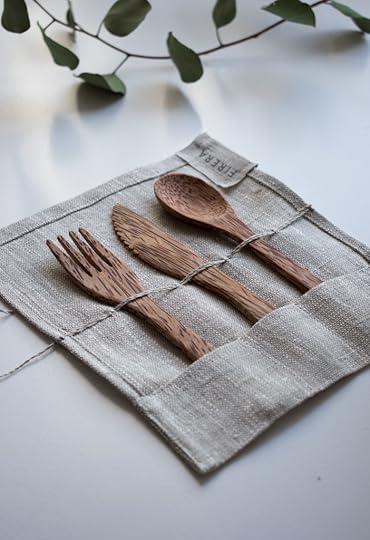 Photo by Maria Ilves on Unsplash
Photo by Maria Ilves on UnsplashMy aim for the summer was to produce as little waste as possible. I knew that avoiding waste entirely would be an impossible task, especially when you have kids, who always, and I mean ALWAYS, want to eat or drink something.
Flying OutOn the way out of the UK, at the airport, we didn’t get any food wrapped up in plastic, which was a pleasant surprise for me because, as some of you already know by now, I don’t think the UK plans very well for long-term sustainability solutions. When it comes to taking concrete, positive environmental actions and thinking about long-term sustainability, UK is seriously lagging behind many EU countries. We did buy a couple of cans of lemonade and a bottle of water since the water fountain was still not open.
Over the past few months, the teenage M. became so aware of plastic that he consciously refuses to buy drinks coming in plastic bottles and opts for glass and cans. In many European countries, glass bottles can be returned, but this hasn’t been widely practised in the UK.
Meanwhile in PolandUnfortunately, I couldn’t find easily accessible recycling bins while we were out and about in Poland. The only place, where recycling and trash segregation was available and visible was on the beaches in Gdansk and Sopot. Still, many people choose to ignore the signage and dump garbage in whatever container they feel like it. (Makes me soooo MAD)
So, when you are out and about in Polish cities (I visited four this summer), the recyclable material neither go into the regular trash bins (I don’t know what happens with that after the collection), or you have to take recyclables home and recycle them in your own/communal containers. This is what we did most of the time with glass and paper.
Most waste we’ve created came from plastic water bottles. When in the city (Wroclaw), we drank water from the tap, but when at my parents, who live in a tiny village, the water from the deep underground stream surprisingly isn’t good enough to drink straight from the tap. Regrettably, we had to buy water in plastic bottles. We tried to look for recycled bottles and only found one brand selling water in recycled bottles. However, that brand wasn’t freely available in many local shops or supermarkets.
I didn’t buy any facial masks, neither shampoo bottles. We only got a shampoo bar from Lidl. I still don’t dig it that much, but my hubby says he’s okay with it. My mum gave me one of her many body lotions; it was in a plastic bottle, but if I didn’t use it, it would have ended up unused. ( I also found one shampoo bottle and soap in one of the baskets in the storage room.)
We bought one soap for baby M. in a paper wrapping, which we all used up. I also bought a body lotion for baby M. in an aluminium container, which was inexpensive and, to my biggest surprise and joy, cleared out dry patches randomly appearing all over her tiny body.
While we were in Wroclaw, we had a take-out three times. Each time it was boxed in biodegradable or paper boxes.
While in Gdansk, we didn’t have take-out at all. Only once I bought Vegan Greek Salad that came in a paper container, which I couldn’t properly recycle because there wasn’t a bin available for that. To eat the salad, I had to get a plastic fork from a nearby restaurant ‘cos the vegan place I bought the salad from didn’t have any wooden cutlery.
On the last day of our stay, we asked for a takeaway box for two slices of pizza. To my greatest horror, the container we got was a non-recyclable one, which I thought was illegal to use in the EU anymore.
That experience only shows that I must be more vigilant when asking for take-out containers and not assume everyone follows the rules. I didn’t have our food containers with me, but next time I won’t make such a silly mistake.
I used my metal straws whenever possible. Unfortunately, one place in Wroclaw, for reasons unknown to me, wanted to give me a plastic straw. My request not to use one was met with astonishment from the staff member. Note to self: hipster place doesn’t necessarily equal progressive and sustainable thinking.
Once again, I devoted a significant amount of time to declutter the storage room in my parent’s house. I always find lots of things that are currently gathering dust but can be easily used as gifts. I’ve already managed to pass on a few things and reuse teenage M’s colouring and sticker books for baby M.
When it comes to food, I tried to buy as many plastic-free foods as possible and eat mostly out from my parents’ garden (now, at the end of August, the garden has plenty of late summer fruits, and some veggies are still going strong). Earlier in the summer, we ate lots of cucumbers, onions, and tomatoes. Unfortunately, there is no farmers market nearby (it’s a bit insane), so most of my shopping was done in a supermarket but the food wasn’t necessarily produced locally.
I must admit that I’ve been feeling guilty about the plastic water bottles, but on the other hand, all the organic food waste has been reused, something we don’t do in London, but I’m looking into it. I’m also psyched that we didn’t get any toys for our kids; they did get some gifts from our friends, and I really need to learn how to accept that not everyone sees the waste the way I do.
I’ve not bought anything unnecessary myself (tones of beauty products as I used to do every year in non-recyclable containers), no takeaway coffee or teacups, nothing non-essential like that. That is a massive improvement to all those years when I was still into my overconsuming wasteful ways.
ConclusionAll in all, travelling if done mindfully can be more sustainable. Whether it can reach zero waste, honestly I’m not sure. The people who are religious about the zero-waste movement will most likely tell you that yes, it can be done. Still, I have my doubts, especially when you travel internationally and with children.
As long as each of us does whatever we can at any given situation to reduce our consumption, which often leads to waste, that act of kindness towards suffering Mother Earth will always contribute towards a sustainable future. If enough of us follows eco-minimalism and become mindful consumers, the momentum for change will gain enough traction. Finally, the governments and organisations profiting enormously, while polluting the planet, will hear our screams (hit it where it hurts the most – their pockets).
PS. This has been my first mindful travelling summer ever. I’m not saying I’ve done a brilliant job, but I stayed the course and wasn’t distracted or diverted from my path, which makes me pretty happy.
 https://www.patreon.com/magdaolchawsk...
https://www.patreon.com/magdaolchawsk...The post On My Zero Waste Journey Off, I Go Part 3 (the summer travels) appeared first on Ecotopia Universe.
July 17, 2021
Do What Empowers You!!!
We all have heard this saying probably a million times under many different circumstances, and each time, most likely, it referred to something else. For me trying to produce as little waste as possible, which requires finding sustainable swaps, is empowering and has been helping me out throughout the whole pandemic. Focusing on something positive as well as something outside of myself feels empowering.
I know that there are many voices out there, especially from the climate deniers who believe, shout, bully and scream that everything is fine with the world and our natural environment (the soaring temperatures across the globe are fine).
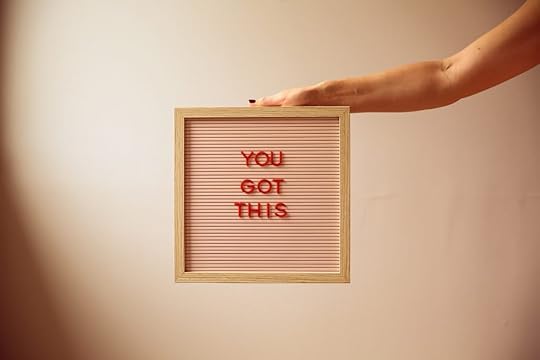 Photo by Ava Sol on Unsplash
Photo by Ava Sol on UnsplashThose individuals and organisations want to make others believe that our small actions won’t matter and won’t change anything (anyway, there is nothing wrong, so why change, right?).
Those people only aim at disempowering us with their bullying and tantrums. Hence, doing what we believe is right for us and the environment at this moment in time has so much power, and bullies are terrified of people who feel empowered.
Greta Thunberg started a global movement, connected with young people, and made climate change an essential part of the global conversation. If she ever believed the bullies that her “small” actions didn’t matter, she would have never begun the school strike in the first place. Thanks to her efforts, there has been much more focus on the environment (now concrete actions are needed from communities, governments, and businesses), and many young people are pressuring their parents and governments to change their unsustainable habits. Learning about eco-minimalism, zero waste, and circular economy gave me the incentive to change my ways and strive to be a much better version of myself.
I feel that the empowerment comes not only from taking small actions, which, if taken by enough people, will lead to global change, but also from knowledge. For instance, recycling is still confusing, even though we all have been doing this for a long, long time. But knowing how and what gets recycled is vital to avoid items ending up in landfill, which didn’t have to end up there. Yet, I still see people, including my son, putting the wrong things in the recycling bin.
Knowing why some clothing brands are so cheap and being aware that those items won’t be reused or resold in charity shops might make some people more mindful of their shopping choices.
Of course, the corporations, which business models are solely based on consumer spending don’t really want to empower consumers, don’t want them to gain knowledge that would turn them into conscious consumers. It’s not in the corporate best interests, but in ours and the generations that come after us.
Luckily, easy access to information helps activists and bloggers spread the sustainability and eco-minimalism gospel, while empowering millions of people to take appropriate steps towards change. We all know that education leads to a better life. Learning how to live sustainably, grasping the knowledge leading to positive change for us all should be as easily accessible as learning how to read and write.
So, empower yourself with knowledge and don’t let the trolls spoil your quest for a better and more conscious, greener future. The time to act is now; we cannot wait any longer, the Earth cannot wait any longer.
PS. Watch WALL-E if you want to have an idea of what might happen when consumption takes over common sense and survival instincts.
I’m taking a summer break from blogging, but I’ll come back in September.
For now, browse my blogs on Ecotopia Universe.
Check out the stories and scripts from the Ecotopia Universe.
Hop over to Impakter for more sustainability articles.
If you in the mood for some YouTube, Shelbizleee is your girl (I don’t agree with everything she says but nonetheless she has some good videos, tips and points).
If you would like to try some vegan cooking and cut down on meat consumption, while loosing weight at the same time, check out Chelsea Mae.
Happy Summer 2021Read my stories from the Ecotopia UniverseThe post Do What Empowers You!!! appeared first on Ecotopia Universe.
July 8, 2021
On My Zero Waste Journey Off, I Go Part 2
I’ve been busy in June trying out a bunch of new sustainable swaps. Not all of them have proven to be as good as I would have hoped for. But since I treat my journey as a learning curve, I’m flexible to try out swaps, and if I consider them not usable or not up to my standards, I’m happy to swap the swaps.
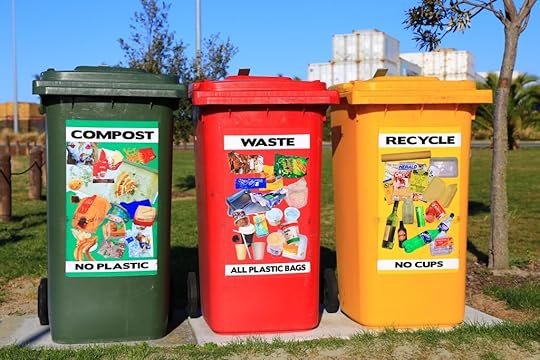 Photo by Nareeta Martin on UnsplashMy June’s swaps included:New bio-degradable washing up sponge, which I love. It took some time getting used to the size and texture, but now I cannot believe I haven’t used it all my life.Beeswax wrapping paper – well, my son doesn’t like having his sandwiches wrapped in beeswax paper. He says that they get soggy, which isn’t entirely true because we have tested it. So instead, we experimented with using beeswax to wrap up cheese, but the cheese dried out. I need to look for an alternative for his school lunch sandwiches and possibly buy another beeswax paper. In all honesty, I don’t think the one I got is that good. (Maybe buying beeswax paper on Amazon isn’t such a good idea. The texture didn’t feel the same as the beeswax paper I found in zero waste shops.)Reusable freezer bags – my hubby used a lot of the cling film to wrap around his sliced meat before sticking it in the freezer. But since I got the reusable freezer bags, he made the transition quickly and easily. The freezer bags aren’t the easiest to wash and dry, but we don’t mind the slight inconvenience if it means less trash.I’ve tried to use the Mooncup, but it’s not for me. However, I’ve ordered reusable sanitary pads from eBay, waiting for delivery, and I’ve used the Modibodi underwear, which I love. I’m planning to order more. It’s on the pricy side but I’m going to split the costs by ordering one pair of undies a month. The packaging is compostable and arrives by post, so I won’t feel mega guilty about the orders.I bought two different shampoos from two different zero waste shops, and both are usable. That is a big relief because the shampoo was something I struggled to replace for a long time.The LastSwab Reusable Cotton Bud – it’s ok, though not as good as the ordinary cotton buds. I’m planning to try another brand to see if it will suit me better. But for now, LastSwab does the job.As a family, we finally braved the new world of toothpaste haunting and got a jar from the zero waste shop called Ben & Anna. Unfortunately, neither of us likes the taste so we will keep experimenting with other brands.I nearly stopped using paper towels altogether and swapped them for biodegradable washing machine and dishwasher washable cloths, which I love!!!!I started buying package-free soap from zero waste shops. It’s slightly cheaper than soap in boxes or plastic.My husband began using containers for buying meat and cold cuts. He was pleasantly surprised that our local shop accommodated his request. This one activity cuts down on our single used plastic significantly.I also tried the Laundry Detergent Eco-Sheets, but, unfortunately, I have to report that I’m not happy with it. It doesn’t clean kids’ muddy clothes at all, neither clothes washed on the sensitive cycle. Once I’m back from the summer break, I’ll most likely try the detergent from the zero-waste shop. I think the laundry detergent has been my biggest disappointment in June.I’ve been shopping much more in the zero waste shops for dry goods than in the previous month. I’m hoping that this trend will continue, allowing us to expand the variety of grains we eat.
Photo by Nareeta Martin on UnsplashMy June’s swaps included:New bio-degradable washing up sponge, which I love. It took some time getting used to the size and texture, but now I cannot believe I haven’t used it all my life.Beeswax wrapping paper – well, my son doesn’t like having his sandwiches wrapped in beeswax paper. He says that they get soggy, which isn’t entirely true because we have tested it. So instead, we experimented with using beeswax to wrap up cheese, but the cheese dried out. I need to look for an alternative for his school lunch sandwiches and possibly buy another beeswax paper. In all honesty, I don’t think the one I got is that good. (Maybe buying beeswax paper on Amazon isn’t such a good idea. The texture didn’t feel the same as the beeswax paper I found in zero waste shops.)Reusable freezer bags – my hubby used a lot of the cling film to wrap around his sliced meat before sticking it in the freezer. But since I got the reusable freezer bags, he made the transition quickly and easily. The freezer bags aren’t the easiest to wash and dry, but we don’t mind the slight inconvenience if it means less trash.I’ve tried to use the Mooncup, but it’s not for me. However, I’ve ordered reusable sanitary pads from eBay, waiting for delivery, and I’ve used the Modibodi underwear, which I love. I’m planning to order more. It’s on the pricy side but I’m going to split the costs by ordering one pair of undies a month. The packaging is compostable and arrives by post, so I won’t feel mega guilty about the orders.I bought two different shampoos from two different zero waste shops, and both are usable. That is a big relief because the shampoo was something I struggled to replace for a long time.The LastSwab Reusable Cotton Bud – it’s ok, though not as good as the ordinary cotton buds. I’m planning to try another brand to see if it will suit me better. But for now, LastSwab does the job.As a family, we finally braved the new world of toothpaste haunting and got a jar from the zero waste shop called Ben & Anna. Unfortunately, neither of us likes the taste so we will keep experimenting with other brands.I nearly stopped using paper towels altogether and swapped them for biodegradable washing machine and dishwasher washable cloths, which I love!!!!I started buying package-free soap from zero waste shops. It’s slightly cheaper than soap in boxes or plastic.My husband began using containers for buying meat and cold cuts. He was pleasantly surprised that our local shop accommodated his request. This one activity cuts down on our single used plastic significantly.I also tried the Laundry Detergent Eco-Sheets, but, unfortunately, I have to report that I’m not happy with it. It doesn’t clean kids’ muddy clothes at all, neither clothes washed on the sensitive cycle. Once I’m back from the summer break, I’ll most likely try the detergent from the zero-waste shop. I think the laundry detergent has been my biggest disappointment in June.I’ve been shopping much more in the zero waste shops for dry goods than in the previous month. I’m hoping that this trend will continue, allowing us to expand the variety of grains we eat.I’m happy to report that our waste production has gone down, especially the recyclable portion. Being conscious of packaging is paying off.
ResearchI still haven’t done my research into finding a new ethical bank, composting solution for our organic waste that would accommodate our living situation and filter for the washing machine. However, I’m hoping that I’ll have slightly more time to do that over the summer.
AimMy aim hasn’t changed. I’m determined to leave as tiny environmental footprint as I humanly can. So, my kids and all the generations that come after will still be able to enjoy the beauty and generosity of Earth. I also want to teach my children that shopping zero waste and living an eco-minimalistic lifestyle is doable and possible, even on the budget and in the big city.
The next update on my Zero Waste Journey will be at the end of the summer after I get back from Poland, of course if we can travel. I want to see how little waste I can create while travelling.
Enjoy your summer as much as you can.
Read my stories from the Ecotopia UniverseThe post On My Zero Waste Journey Off, I Go Part 2 appeared first on Ecotopia Universe.
July 3, 2021
What Is Your Environmental Footprint?
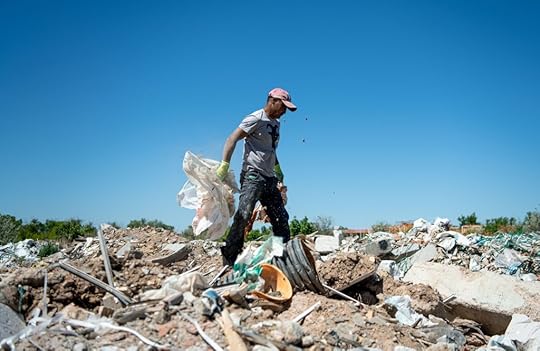 Photo by OSPAN ALI on Unsplash
Photo by OSPAN ALI on UnsplashEnvironmental footprint defines the outcome our lifestyle choices have on the natural environment. And before we delve into the subject, we are going to focus here only on individual environmental footprint.
When we think about the environmental footprint, we need to take the whole production process into account:
What materials are used when making the product? How are those materials grown, produced?Where is the finished product travelling from?How efficient/sustainable is the packaging?What will happen with the packaging and the product once its life cycle ends? (Can it be recycled, re-used, up-cycled, donated?)FOOD PRODUCTION
If I buy avocados from California, the environmental footprint of that purchase will be larger than if my avocados came from Spain (I live in Europe). The Spanish avocados, in my case, will leave a smaller environmental footprint than the Californian ones because of the distance they have to travel.
Going further, if we only buy seasonal veggies and fruits, the environmental impact will be lesser than eating food out of season. After all, all those exotic fruits and veggies (including avocados) must travel long distances to get to consumers. Eating locally grown and seasonal foods are gaining momentum, and it has become easier to find local food.
 Photo by CDC on Unsplash
Photo by CDC on UnsplashMaking preserves is also a good way of eating foods you love so much out of season, without impacting the environment. (Watch How to Make Polish Pickles?)
HOUSING
The size of the accommodation also matters enormously. The bigger the house, the larger the footprint it leaves behind. Apart from having a higher maintenance cost, big houses need more furnishing, more cleaning (using more cleaning products), and more fuel to keep warm in the winter and cool in the summer. Also, the research shows that, in general, people tend to buy more of everything, when they have bigger houses.
TRANSPORTATION
The way we use transport has a vast environmental impact. If I were to use my car every time I go to a corner shop that is environmentally problematic, not sustainable, and not too healthy for my body. Walking, cycling, and using public transport are much kinder and more sustainable choices, also better for your pocket.
SHOPPING
Buying new stuff, such as clothing, household equipment, electronics, which are mostly flown from factories overseas, will impact the environment in a more negative way than buying all of that second-hand, or fixing your clothes or broken equipment. Apart from considering the production process and the travelling, we also need to remember that many rare minerals go into making electronics. Often, mining those minerals is neither sustainable nor humanitarian, so not feeling the pressure to buy new electronics every time an update is available will make a difference to the natural environment. And will send a signal to the corporate world that you, the consumer, don’t support the linear economy model.
For instance, I order oils and ointments for my kids from Bristol (UK). All of the ingredients the maker uses are grown in her garden = locally produced. Even though she still needs to put her products inside a parcel and ship it to London, the whole process leaves a much smaller environmental footprint than if I was to buy the same type of product from a company that sources their products from, say, Asia or South America.
Since I got into sustainability and eco-minimalism, I started paying more attention to where the products I buy come from. I’m trying to buy local, European made products. However, it’s not always possible, and I get mega annoyed with myself when I find out that the sustainable swaps I’m using are produced in Asia and shipped all across the world to Europe, leaving a massive environmental footprint behind.
ONLINE SHOPPING
The same rules apply while ordering online. I try to buy several items at the same time, but often they arrive from different warehouses, and instead of one box, I end up with five. This creates not only extra waste but also pollution through transportation and inefficiency of the delivery system.
CONCLUSION
If you seriously think about turning your life around and becoming more sustainable, thinking about your environmental footprint is an integral part of the process. Always start small, and don’t overwhelm your system with too much change or information at once. Try to take actions that you know you can, always considering your living situation and affordability.
 Photo by Amy Shamblen on Unsplash
Photo by Amy Shamblen on UnsplashBuying 2nd hand will be cheaper than buying new, buying seasonal and local will be more affordable than buying out of season.
There are websites, which help people offset their environmental footprint, so if you would like to do that, just research what is available. I’m not recommending any companies here, but make sure you check out who is behind those projects & companies. Some of those businesses are run by the same corporations and people (some of the climate deniers), who got us all into the mess we are in, hoping to make some quick money.
The best offset is always to try to leave as little environmental footprint behind as possible. Keep in mind that small actions do impact your local community, your friends, and your family. With time, your signals will reach the corporations/producers, which will need to adapt to the circular-economy model to thrive in the new world.
Read my stories from the Ecotopia UniverseThe post What Is Your Environmental Footprint? appeared first on Ecotopia Universe.
June 25, 2021
What Does Eco Minimalism Mean?
The term ‘Eco minimalism’ was coined by Howard Liddell (architect) and Nick Grant (energy consultant) and, at first, only applied to constructing buildings designed to have a minimal environmental impact. However, in recent years, the concept has been adapted by the union of minimalistic and environmental movements.
Minimalists live by decluttering their lives from whatever they consider excessive and focus on mindful consumption and buying only what they need and when they need it. Everyone perceives minimalism differently, so what for some might be minimalistic for others may seem excessive.
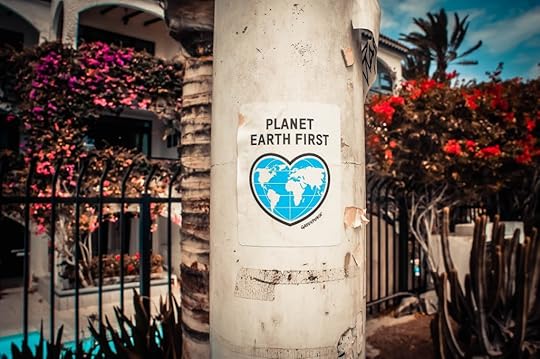 Photo by Photo Boards on Unsplash
Photo by Photo Boards on UnsplashEnvironmentalists try to reduce their environmental footprint as much as they can. So, they would use lots of reusable swaps, reduce packaging, and buy only what they need, thinking about the whole production and delivery process, which in regard to some products isn’t sustainable (i.e. How far did the product travel to get to you? Can you buy something produced locally?).
Both movements are strong advocates of reusing items, upcycling whenever possible and consciously making decisions that will impact consumers’ lifestyle, sustainability on Earth or debt they carry.
Eco-minimalism is a combination of both movements. In short, it propagates less clutter and mindful sustainable life choices. Eco-minimalism doesn’t mean that you should become a monk and live off the strip of land for the rest of your life. For me, eco-minimalism has empowered me to set my own boundaries that include the following elements:
Defining what clutter means to me/you personally? If you are decluttering your space, you don’t have to get rid of everything you own. Keeping the items that you use and the items that make you happy is vital. Currently, I’m decluttering my inbox. I’ve been subscribed to so many newsletters, which I never read. On average, I would get around 20-30 newsletters every day. So now, when I open my email and have no new messages, that makes me smile. I’m only keeping my email for the important stuff. My next task is decluttering my life from emotional vampires.Thinking about clutter, I usually focus on the things around me that bother me when I look at them. I have a lot of photo frames all around the living room, and I’m more than certain a lot of minimalists would see this as clutter. However, it gives me so much pleasure and happiness to look at the photos of my kids at different age that I’m sure I won’t get rid of them. For every one of us, clutter represents something else. Try to coin your own definition of clutter and refocus your life towards clearing that, instead of trying to copy others who may perceive minimalism and clutter in a completely different way.Knowing why you want to follow the path of eco-minimalism is essential – having a strong WHY will stop you from going crazy and spend hundreds of ££’s on hair accessories or other staff that you will never, ever use. My strong WHY keeping me on the path of sustainability and financial independence are my children. I want to leave as little environmental footprint behind as possible and set an example for them, which they then can adapt in their own lives, once they become independent adults. Choosing to build your path is essential. So, if books are important in your life, getting rid of them isn’t going to make you happy. But if you don’t care about the car and prefer to use public transport and/or a bike, …Always choose what is good for you at the current stage of life. I believe that you should base all your eco-minimalistic decisions on what works for you at this moment in time. Your eco-minimalism will change and grow together with you. If you try to implement too many changes too fast, the odds of relapsing to the old ways are high. Small but consistent change is my motto.Don’t look at and compare yourself to other people. You are where you are. You are doing your best to change YOUR life for the better, and it takes time and courage.Eco-minimalists try to leave as little footprint behind as they can. Their choices are minimalist because they don’t need excessive stuff to be happy, or they use many reusables, sustainable items that don’t need replacing often. Putting sustainable choices, being kind to the environment, thinking long term is the backbone of the whole movement. An eco-minimalistic lifestyle is also good for the pocket, with less spending on things that aren’t essential, and more opportunities to save up and invest. Once you invest in reusable swaps, you won’t need to replace certain items for a long time.Always remember: re-use, upcycle and make friends with 2nd-hand items before you purchase something new.Zero-waste lifestyle is different to eco-minimalism, but there are a lot of similarities. However, personally, where I am now, I know I wouldn’t be able to commit fully to the zero-waste lifestyle. Small steps, right?In my opinion, eco-minimalism is more manageable than a Zero-Waste Lifestyle and more workable over a long time, especially for people waking up to the realization that we are drowning in the pool of rubbish, while constantly adding more to the pile.
We all need to try to stop the vicious cycle, and eco-minimalism could be the right steppingstone. If enough of us will take the right actions, we might just might turn the tide.
 Support My Work on Patreon
Support My Work on PatreonThe post What Does Eco Minimalism Mean? appeared first on Ecotopia Universe.
June 17, 2021
Our Shopping Addiction Overwhelms Charity Shops
An average US family spends around $1800 on clothing a year (similar figures can be found across other Western countries). That is a lot of clothing items. It’s understandable to buy clothes for growing kids (exchanging clothes or partly exchanging, especially for babies, who grow out of everything in no time is a much more sustainable solution) but for adults, it’s a completely different story.
When I was crazy into re-inventing my wardrobe at least once, if not twice a year, the clothes that I thought weren’t good enough or in fashion anymore always ended up in a charity shop.
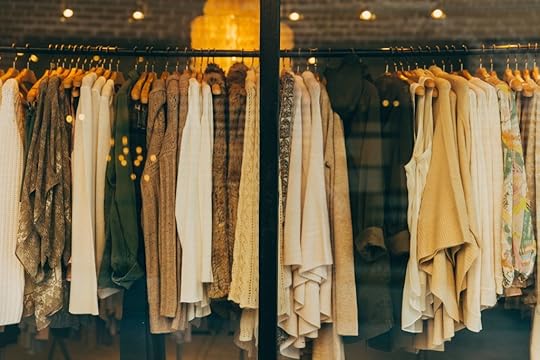 Photo by Hannah Morgan on Unsplash
Photo by Hannah Morgan on UnsplashUnfortunately, little I knew then that charity shops have been crushed with donations they aren’t able to sell. Many clothing items, largely from the brands propagating fast fashion cannot be sold anymore. Unfortunately, the quality of cheap fashion is bad, really bad. As consumers, we’ve been shopping for so many non-essentials, falsely believing that if something doesn’t fit, donating to a charity, will help a good cause and clear our consciousness.
I’m afraid that it doesn’t work this way anymore. All the clothing items charities are unable to sell will either be sent to your local landfill or to third world countries and end up in the landfill there. I’m sure we have all seen heaps of clothing rubbish, which cannot be re-sold.
If you are like me and many millions of other people, awakening to the reality of our beautiful Earth dying on our watch, cutting down on fast fashion should be your number one priority. In fact, cutting down on buying unnecessary clothing, we all need socks and underwear from time to time, should be at least seriously considered by everyone. When I open my wardrobe, I know that I already have more than enough for every occasion I can possibly think of. Hence, I’ve been on the quest to buy no clothes for myself for the second year running.
I simply don’t want to be a part of the problem. I want leave as little wasteful footprint behind as possible.
So, instead of overwhelming charity shops and pushing the responsibility of dealing with unwanted items/shopping mistakes and therapy sessions (retail therapy is such a myth), my suggestions below will hopefully help you make more informed decisions aligned with your new sustainable consciousness:
Try to delay your purchase for a bit. If, at the end of the waiting period, you still really badly need that item, go for it. However, before you proceed with the transaction shop around for sustainable alternatives. There are a lot of Earth-friendly brands that use recycled, sustainable fabrics. Instead of buying a new outfit for one party only, try to borrow from friends or rental places.Look for good quality, designer clothes in charity shops in more affluent parts of the city.If you collect clothes, like my mum does, check all those bags and boxes you have. You might be very surprised with your finds. I was astonished last year when I found 4 pairs of linen trousers, two of which still had a price tag attached and a dress I loved that I totally had forgotten I had.Repair your clothing items if you can (YouTube videos are very helpful during this process). It’s not only sustainable but also amazingly rewarding to know that you can repair your clothes. For me, it’s a wonderful meditative experience.Invest in good quality, timeless pieces. This way you won’t have the need to replace your wardrobe every season and you won’t have to as well. I have one winter jumper I bought when I was a student. I bought it from French Connection, it was on sale and back then I had to wait until the sale price went down to £15 before I was able to afford it.Stop following trends. All those trends aim for one thing: to pressure people into buying more. That approach only adds to heaps of pollution that can be easily avoidable.I’m not going to suggest selling your clothes online because I feel that this activity requires a full-time commitment. However, I have a friend who makes pretty good money on car boot sales. So maybe that could be an option of some sort.If you have extended collections of clothes you don’t need, don’t want to sell, or pass on to your friends or family members, maybe some of the websites below will help you clean your closet and your consciousness in the process:10. Not spending money on clothing, which end up polluting the whole planet, will also save you quite a bit of cash. If you were to spend $1800 on clothes a year, putting that money towards your investment portfolio over 20 years with an average return of 7% would accumulate to $74,179. Not bad, if you ask me, and all that while helping to save the planet in the process.
The post Our Shopping Addiction Overwhelms Charity Shops appeared first on Ecotopia Universe.
June 9, 2021
Easy Steps That Will Help Start Kicking Your Zero Waste Journey
I know that thinking about moving towards a zero-waste lifestyle can be overwhelming. There are so many things that need considering before shifting towards such a lifestyle, that it often feels too much to take on board.
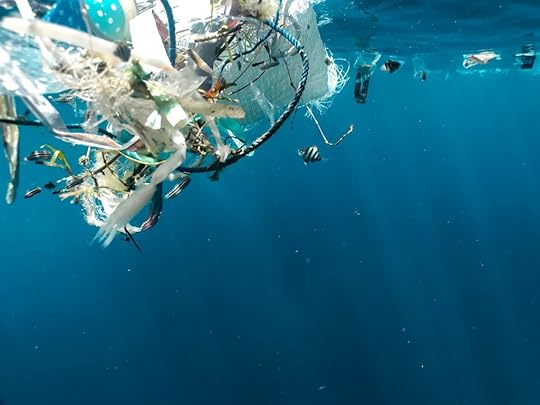 Photo by Naja Bertolt Jensen on Unsplash
Photo by Naja Bertolt Jensen on UnsplashPersonally, I felt this way for years before I mustered the strength to come up with a plan to combat my wasteful ways. I discovered that looking for ways to be less wasteful with what I had around me was the key that started me on this journey. I stopped comparing myself to people who managed to put their waste into a small jar because I knew I wouldn’t be able to do it myself. So, I began my quest from the place I was in.
The list below depicts the steps I’ve been taking to kickstart my adventure without becoming too overwhelmed, which allowed me to embrace my new lifestyle choices slowly:
Take it slowly, don’t overwhelm your system with too many rapid changes and too much information at once.Don’t compare your lifestyle choices with other people, who might have been on the zero-waste lifestyle path for much longer or whose budgets are bigger to allow for more rapid change.I kicked off my journey by learning about and researching sustainability, which led me towards the Zero Waste movement. I doubt I can totally go zero waste, but I plan to reduce as much non-recyclable waste as possible.I made a list of everyday products I wanted to swap for sustainable options. Since I knew it was going to be expensive, I began comparing prices. I feel that it’s essential to talk about the price tag attached to the sustainable, zero-waste swaps because those choices will likely require an upfront investment. People who struggle financially don’t have the means to do so. Hence, I feel strongly that the zero waste/sustainable movement needs to become much more economically inclusive.I decided to swap one personal item a month so this way I knew my budget wouldn’t blow up all of a sudden.Since the beginning of May, I’ve been replacing one non-sustainable/wasteful item a week. I figured that if I buy those items every week, I’ll still be able to afford the swaps. I simply don’t spend money on anything that isn’t essential; I invest in sustainable items instead.Before I started replacing my daily goods, I used up everything I had in the house (body lotion, toner, laundry detergent, laundry liquid etc.). Nothing goes wasted, whether it was in a plastic container or not.I’ve been keeping a budget, so I know exactly what I spend money on, and I know how much things cost. Budgeting helps me make purchasing decisions. Besides, my goal is to invest long term, so whatever I’m buying now, I’m planning to keep for years. Since it’s challenging to shop for clothes at the moment, I asked my sister if she had any jeans she didn’t use that I could have. Then ones I had ripped at the same time and in the same place, (I’m not impressed AllSaints, shame on you) I paid £100 for two pairs on sale, and I’m never doing that again.In May, I have replaced: Washing up sponges. I’m experimenting to see which ones I like the most. So far, I’m quite delighted with the ones I got.Cotton buds in paper packaging, which I love, but I’m not going to stop there. I do want to try the reusable cotton buds.I bought compostable sponge cloths to use instead of the kitchen towel (I was spending so much money monthly on kitchen towels that this investment will pay back shortly). So far, I love the cloths, and the best part is that I can stick them in a washing machine or a dishwasher and get them easily cleaned.Body lotion. It was on the pricy side, but I’m going to use it for myself and Baby M., and of course, I didn’t purchase a single used plastic bottle.Laundry detergent – I bought a new one from Earth Breeze. The price was the same as buying one fully priced detergent in the supermarket. So far, I’m pleased with that swap.I refilled my fabric conditioner in my local zero waste shop.I bought a dissolvable cleaning sachet instead of buying a new product in a plastic bottle. It only cost £1.25 and works beautifully, smells lovely and doesn’t make my hands itchy. Of course, I’ll re-use the products I already have, but I know I’m not planning on buying cleaning products in separate plastic containers.I got the cover-lids to cover leftover food, instead of using aluminium foil. I haven’t used the foil since getting the lids.I’m on my zero waste journey not only because it helps me focus on something else besides the pandemic, my physical and mental health. I’m on the zero waste journey for my kids.
I have a very vivid imagination and an incredibly anxious mind and soul. So whatever horrible is happening in the world related to the environment right now, my mind can twist it in such a way that it always comes with the worst-case scenarios. If I can do my bit to make sure my kids and theirs can still enjoy Earth, I’m going to stick to my plan. I don’t want Mad Max to become a reality.
If we all don’t start pulling our weight together, this is where selfishness and obsession with profit (How much do you need before it is enough?) are going to lead us all into a very bleak future (Mad Max HELLO!?!?!).
It’s time to say NO to all those corporations who take our finite recourses not only for granted but are hard at work lobbying to pass laws that will keep the money and profits in the hands of the very few, who shouldn’t be entrusted with anything, while the rest of the population suffers dealing with the consequences of short-sighted enriching policies pioneered by the corporate world.
Make your waste reduction plan (it doesn’t have to be zero waste immediately, start small before you can expand) and stick to it. The changes we make now and actions we take or don’t will impact everyone who comes after us.
The post Easy Steps That Will Help Start Kicking Your Zero Waste Journey appeared first on Ecotopia Universe.



